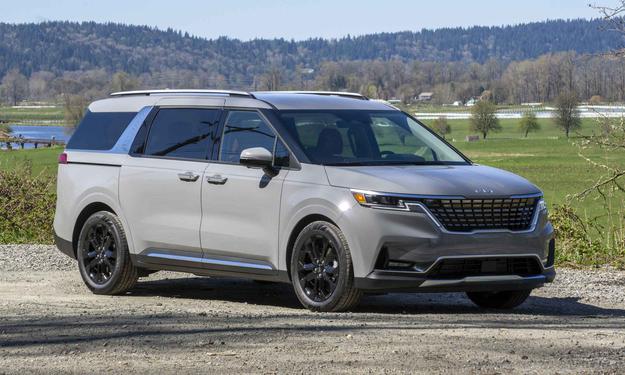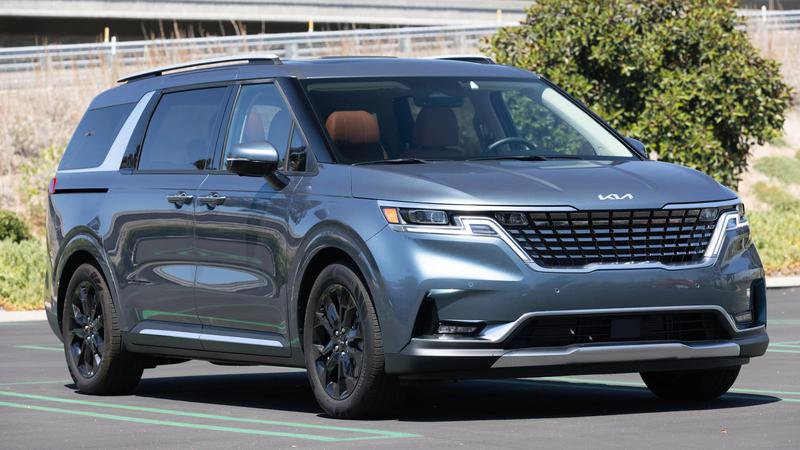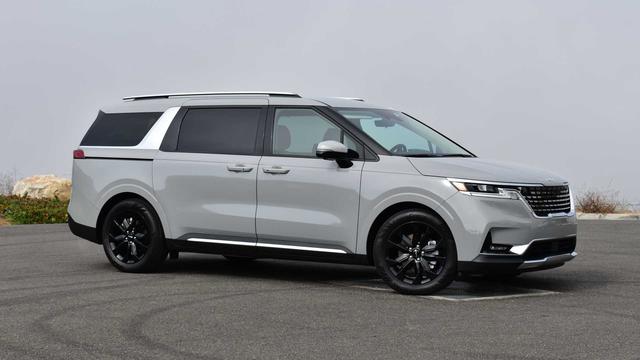Last summer, we reviewed the new Ford Bronco and crunched some numbers to get an idea of how it would fare as a hunting truck. The long and short of it is that the Bronco is an excellent off-roader that leaves something to be desired as a dedicated hunting and fishing rig.
Ford recently rolled out a driving experience called the Bronco Off-Roadeo. The program’s goal is to put new owners (including those on the waiting list) of the Bronco, Bronco Sport Badlands, and Bronco Sport First Edition through a gauntlet of off-road driving under the watchful supervision of professional instructors. Facilities at Moab, Utah; Gunstock Mountain, New Hampshire; Grey Wolf Ranch, Texas; and Mount Potosi, Nevada provide opportunities to explore the vehicles’ capabilities on terrain that’s most applicable to them.
I joined fellow auto journalists and a few senior Ford employees at the old Boy Scout camp at Mount Potosi, for a day of trail driving and rock crawling. The routes were representative of trails I’ve driven all over the western United States. The rocky terrain was right in line with what you might encounter in your pursuit of elk, sheep, or trout.
How the Bronco Compares to Similar 4×4 Options
In the back of my mind was the list of likely alternatives hunters and anglers would consider for such driving duties. The Jeep Wrangler has always been the king of the off-roading hill, and its Gladiator sibling is no slouch. Small trucks and SUVs like Toyota’s Tacoma and 4Runner–and even Ford’s own Ranger–are popular for their off-road credentials and compact size. The Suzuki Samurai is legendary but lacks the size to be a hunting truck for most people. Trucks like the Toyota Land Cruiser and over-the-top Ram TRX have the opposite problem: they’re too big for many trails and prices are even more inflated than usual these days.
On paper, the Bronco should be a competent off-roader with enough size and street manners to haul meat out of the backcountry on Sunday and take the kids to school on Monday–but is it?
First Impressions of the Ford Bronco
All the vehicles at the Bronco Off-Roadeo were equipped with the Sasquatch Package, which can easily be identified by the aggressive 35-inch tires. Those tires are likely to be the first thing that stands out to you when you see a Bronco in person. They create incredibly steep approach and departure angles, meaning that obstacles will encounter the truck’s tires rather than a bumper, more often than not. The large tires also create a wide, commanding stance that makes the Bronco’s off-road intentions known. The package includes electronic locking front and rear differentials, a 4.7:1 final drive ratio, upgraded Bilstein suspension, and fender flares.
Behind the wheel, the Bronco feels very manageable in terms of size. Visibility is good despite the boxy body. Plastic handles on the corners of the hood serve as sighting devices to aid in tire placement on the trail. The seating position is high and commanding. Seat adjustment is manual, eliminating finicky wiring that can be damaged in deep water crossings. Instead of carpeting, the floor is covered with textured rubber and even has drain holes to allow water to escape. You won’t find that on most showroom SUVs.
Hidden in all that retro styling is an array of deceptively advanced features. When fully equipped, a panel on the dash allows drivers to disconnect the stabilizer bar, lock the front differential, lock the rear differential, activate Trail Turn Assist, and turn off traction control. A rotary knob behind the shifter allows the driver to switch between two- and four-wheel drive and access the vehicle’s GOAT Modes, which vary by trim level.
During the trail drive, I had a chance to talk to the Bronco’s chief engineer, Jolanta Coffey. She commented that one of the team’s biggest challenges was staying true to the history of the Bronco while pushing the brand forward. Styling is subjective, but I haven’t talked to anyone who doesn’t think the Bronco is a home run.
Ford Bronco Specifications
In a market saturated with SUVs that are about as sporty and utilitarian as a minivan, the Bronco is the genuine article. It’s built using a rugged body-on-frame platform shared with the Ranger. Power is delivered to all four wheels through a traditional transfer case. You can choose between two-door and four-door variations. The roof can be hard or soft, and both are removable. Styling is a fitting homage to the classic Broncos of the past, but modern and fresh at the same time. The whole package is so packed with technology that it’s hard to keep track of it all.
What Ford Got Right with the Bronco
Off-road trucks face an interesting challenge. On one hand, tried and true features like solid axles and body-on-frame construction are as relevant as ever. Old technology has a loyal following–just look at the amount of Jeep Wranglers on the trails with the same kind of chassis that’s been used for decades. On the other hand, modern computers can get novice drivers through rough terrain without breaking a sweat.
The Bronco is jam-packed with advanced features. Sure, electronic locking front and rear differentials are nothing new, but being able to lock each one independently is. Usually, drivers must choose between locking only the rear or both. Trail Turn Assist takes a page out of the competitive rock-crawling playbook and locks up the rear inside wheel to force the Bronco to pivot around it like an anchor when space is limited. That makes quick work of bends in the trail that would usually force a three-point turn. Disconnecting the stabilizer bar allows vastly improved articulation, meaning the Bronco can keep four tires on the ground where other vehicles would be left with one spinning helplessly in the air. All these features can be controlled with the touch of a button on the Bronco’s dash. If you’d rather let the computer handle individual settings, you can spin a dial on the center console to choose one of up to seven GOAT Modes (eight are available in total, but each trim level gets its own combination of no more than seven).
The Off-Roadeo provided hands-on experience with all these features. I watched another Bronco loft a rear wheel while crossing a deep rut, then I drove through with all four on the ground thanks to the electronically disconnecting stabilizer bar on mine. I felt the four-wheel-drive system bog down on slippery terrain, then locked the differentials to pull forward as easily as if I were on dry pavement. Broncos equipped with the ten-speed automatic transmission come with extra perks. Trail Turn Assist was a huge help on tight switchbacks and never stopped being fun. Trail Control acts like an off-road cruise control that lets you keep your attention on the terrain and allows the Bronco to crawl ahead at speeds you set in 0.5 mile-per-hour increments. All that technology is built into a truck that can lose the roof and feel as carefree as the original Bronco did in 1965 (as a 1966 model).
As a hunting truck, the Bronco can get you where other trucks and SUVs can’t. It doesn’t have much of a learning curve, and the Off-Roadeo experience is included with the purchase of a Bronco if you want to develop your skills. There’s not a ton of cargo space, but the four-door version has more than enough if you keep the guest list short. Think of it as the perfect compromise between a side-by-side OHV and a traditional SUV.
Ford built a vehicle that’s breathtakingly capable off-road, easy to drive, and looks fantastic. The Bronco makes me want to book a guided hunt in Alaska just so I have an excuse to drive more. It’s a compelling proposition, providing you can deal with a few shortcomings.
Where the Bronco Falls Short
As noted in our first look at the Ford Bronco, the biggest problem you’re likely to encounter is towing capacity. Depending on how the Bronco is optioned out, the maximum trailer weight is between 3,440 and 3,500 pounds. That means hauling a decoy trailer or bass boat might be the upper end of what you can expect to pull. That being said, the Bronco wasn’t designed to be a towing vehicle, so if you do a lot of fishing or RV camping you’re probably in the market for a full-size truck as it is.
Space can be another limiting factor. The two-door Bronco is best used as a getaway vehicle for one or two people and a small amount of gear. In the four-door Bronco, the second row of seats offers plenty of legroom for two passengers (three, if the trip is short or the middle passenger is on the smaller side) and the cargo area can fit several packs or a cooler or two. Group fishing trips (without pulling a boat) shouldn’t be a problem if trailer weight isn’t an issue. Certain types of hunting trips might be more challenging; there’s room for people, dogs, or gear–but probably not all three.
Hardcore off-roaders–especially those steeped immersed in Jeep culture–will be quick to scoff at the Bronco’s independent front suspension. It doesn’t offer near as much articulation as a solid front axle, but there are very few times when that will be an issue. The Bronco Off-Roadeo presented the gnarliest obstacles I’ve ever tackled on four wheels, and the Bronco did just fine. It’s also proven itself on the notorious Rubicon Trail. If your bar to clear is higher than that, you want a dedicated rock-crawler, not a hunting truck.
Finally, there are some buyers who won’t consider any truck without a V8. Ford only equips the Bronco with either a 2.3-liter I4 or a 2.7-liter V6. Even the top-of-the-food-chain Raptor gets a 3.0-liter turbocharged V6. Both mainstream options generate plenty of torque and hustle the Bronco along just fine–a V8 simply isn’t necessary. Still, the small number of absolutists will probably be happier in a 392 Jeep Wrangler, even if it’s primarily for the sound.
Who Is the Ford Bronco For?
Like all the best vehicles, the Bronco makes concessions in the pursuit of greatness in one specific area. If your motto is “go light, go fast,” it’s the truck for you. The further into the backcountry you get, the better it gets.
No, the Bronco isn’t a towing rig. No, it isn’t going to carry everything but the kitchen sink to an established campground. And no, it isn’t going to replace your full-size pickup.
On the other hand, if you and a buddy need to access hard-to-reach-places, it’s the truck for you. If you want to load up a dog or two for some upland hunting, you’ll be just fine. And it will have no issues getting you to the deer stand.
It might even expand your interests a little bit, because it’s far more capable than you old pickup. There’s a good chance you’ll find yourself running trails with the local 4×4 club in between hunting seasons.
Read Next: How to Build the Ultimate Hunting Truck
How to Spec the Ford Bronco
First, you should know that the Sasquatch Package can be added to any Bronco, including the Base trim level. Whichever Bronco you buy, I can’t recommend it highly enough.
That being said, the Bronco Bandlands I drove made such an impression that it would be my starting point. The Baja GOAT Mode, steel bumper, floor drain plugs, and electronic disconnecting stabilizer bar that come with the Badlands edition are too good to pass up. Since I’m notorious for packing light, I’d save some money and get the two-door body style with the standard hard top.
Skipping creature comforts like a heated steering wheel, carpeted floor mats, and upgraded sound system would be easy since I wouldn’t be buying a Bronco for logging highway miles. I would, however, have a hard time picking the drivetrain because the seven-speed (six-speed with a granny gear) manual transmission can only be had with the four-cylinder engine. Ultimately, I care more about rowing my own gears than getting extra power. Besides, I’ve driven Ford’s 2.3-liter Ecoboost in a Focus RS and it was a hoot.
All that leaves a bare-bones cabin riding atop a loaded off-roader. The damage comes to $50,080. That’s not pocket change but the performance more than justifies the price. If you want to build your own Bronco, head over to Ford’s configurator to explore the possibilities.



